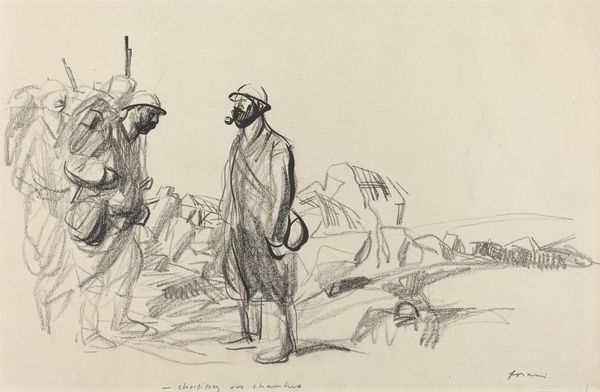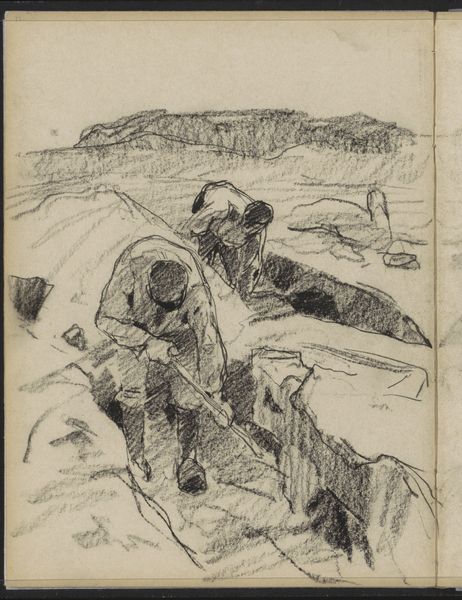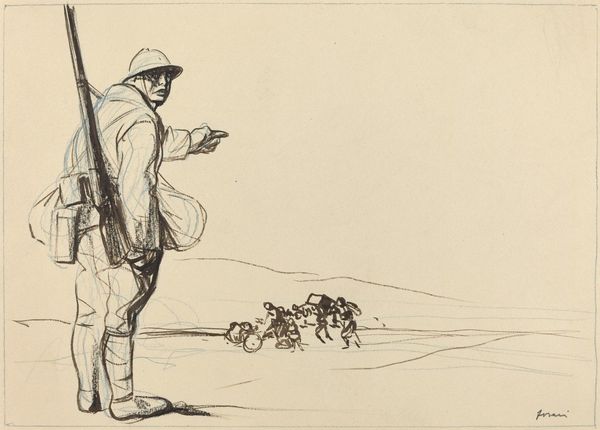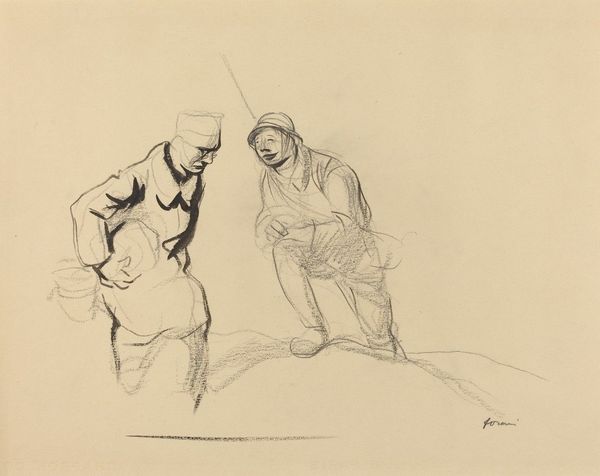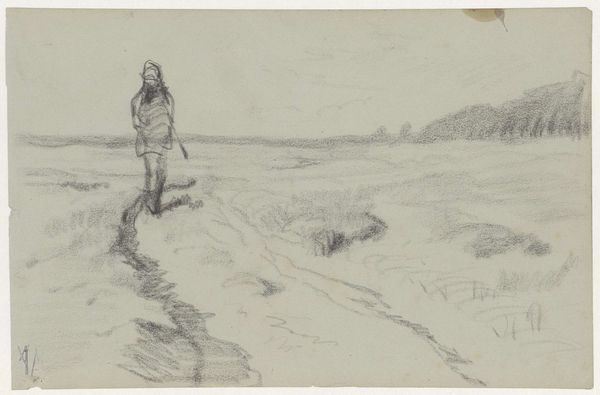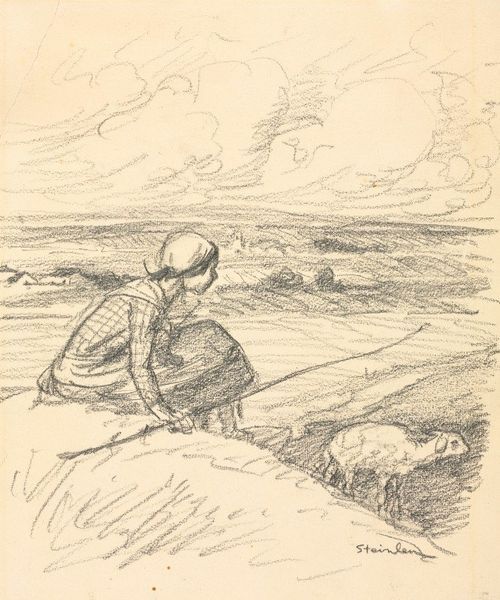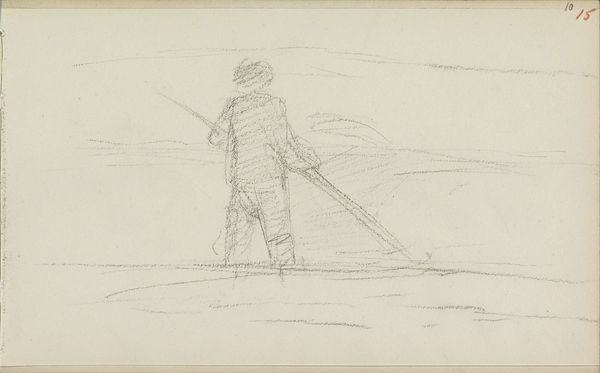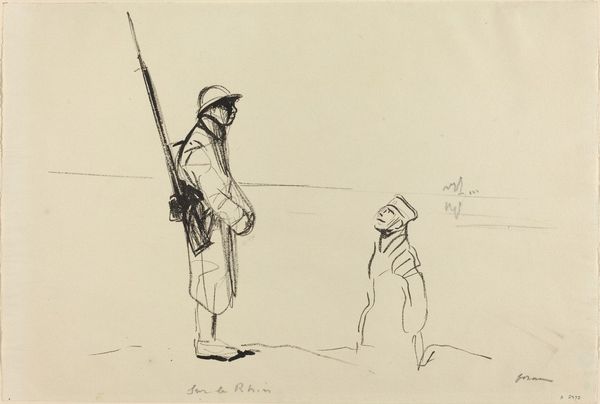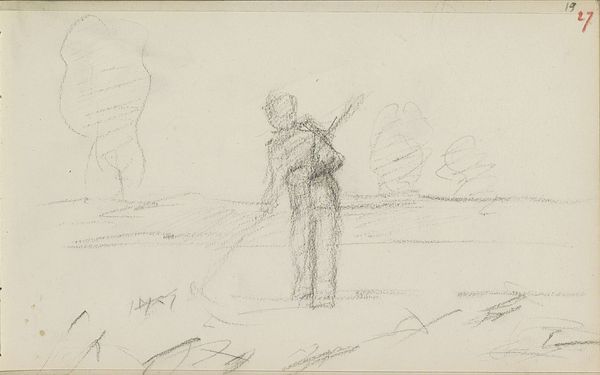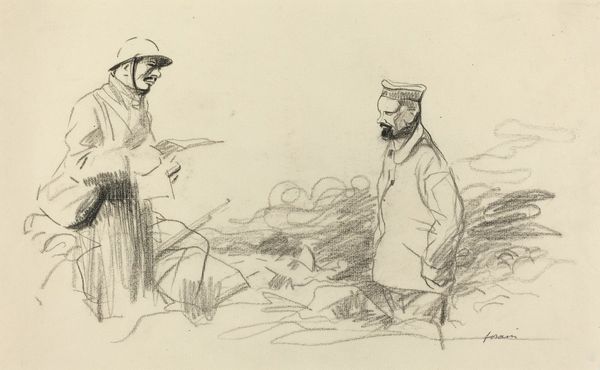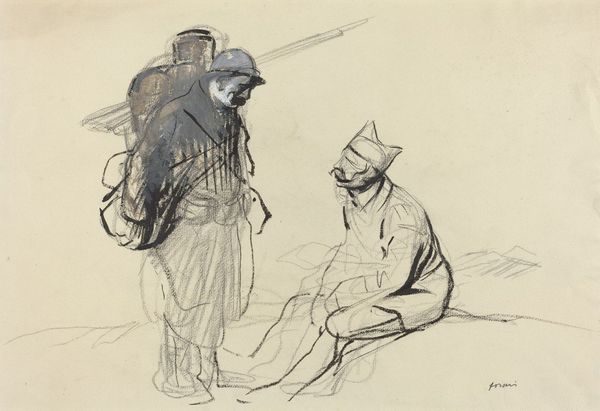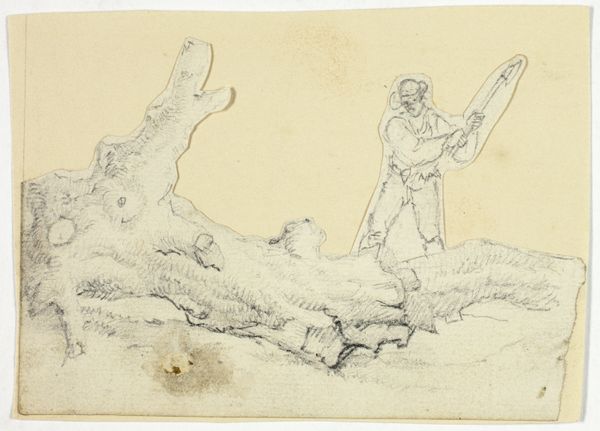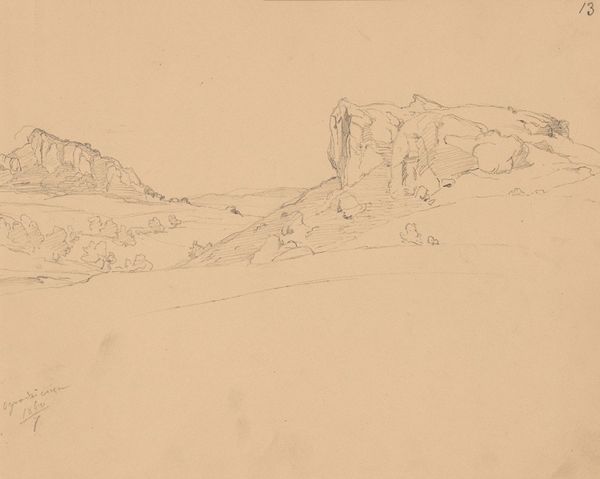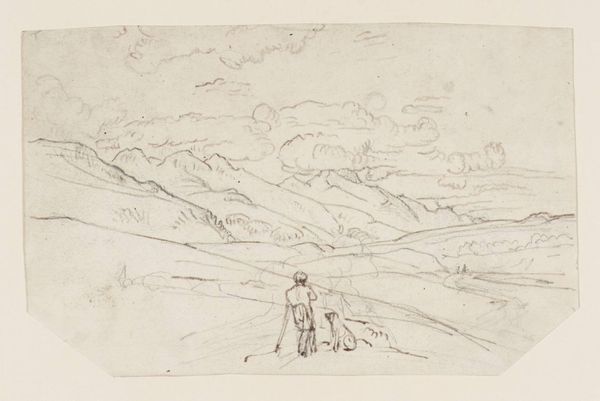
drawing, pencil
#
drawing
#
landscape
#
pencil
#
realism
Copyright: Public Domain: Artvee
Curator: Looking at "Along the Marne," created circa 1918 by Jean-Louis Forain, a drawing rendered in pencil, my first thought is the overwhelming sense of quiet desolation. It's a battlefield stripped bare. Editor: Yes, that quiet is powerful. The sparse lines, the emptiness, all achieved through what appears to be fairly economical use of pencil on paper, right? It really underscores the material scarcity likely present during wartime. Curator: Precisely. The sketch-like quality emphasizes its production. We see not just an image, but a physical artifact, reflecting the context of World War I – resources diverted, labor focused on war, and Forain as both an artist and a participant in documenting that moment. It suggests something made quickly, possibly on the front lines, raw and unadorned. It evokes that tension. Editor: And Forain perfectly captures that. He wasn't just passively recording. There’s this soldier looking out over the ravaged landscape, helmet prominent, as if to remind himself, or maybe us, of humanity amidst this mechanized madness. Curator: He does not look out confidently, I see a kind of bewilderment. The quick pencil lines denote a ravaged land—strewn debris in the midground and barren hill in the background; it all reflects the sheer scale of industrial war as resource consumption, landscape transformation. Consider the symbolic consumption too—shattered illusions, devastated psyches reflected on that desolate beach. Editor: That figure almost looks translucent. The soft pencil strokes render him ghostly, as if he, too, is already a memory, fading into the scene he surveys. And the beach! Is that really a beach? Or the site of unspeakable tragedy... It reminds me of the burden of witnessing such trauma, transformed into artistic statement. Curator: The figure's rendering indeed points us towards more than merely documentation, but a mediation on loss; even the artist is working within resource limits. Perhaps a deliberate stylistic restraint. Editor: Yes, it invites that conversation. The deliberate restraint serves both aesthetic and deeply emotional functions, mirroring, perhaps, the repression of traumatic experience in order to endure. Curator: What's clear is this artwork underscores the intricate intersection between artmaking, materiality, labor, and cultural representation that complicates even the most seemingly simple sketch. Editor: Well put. It seems Forain, with very minimal materials, has left us contemplating quite profound things.
Comments
No comments
Be the first to comment and join the conversation on the ultimate creative platform.
